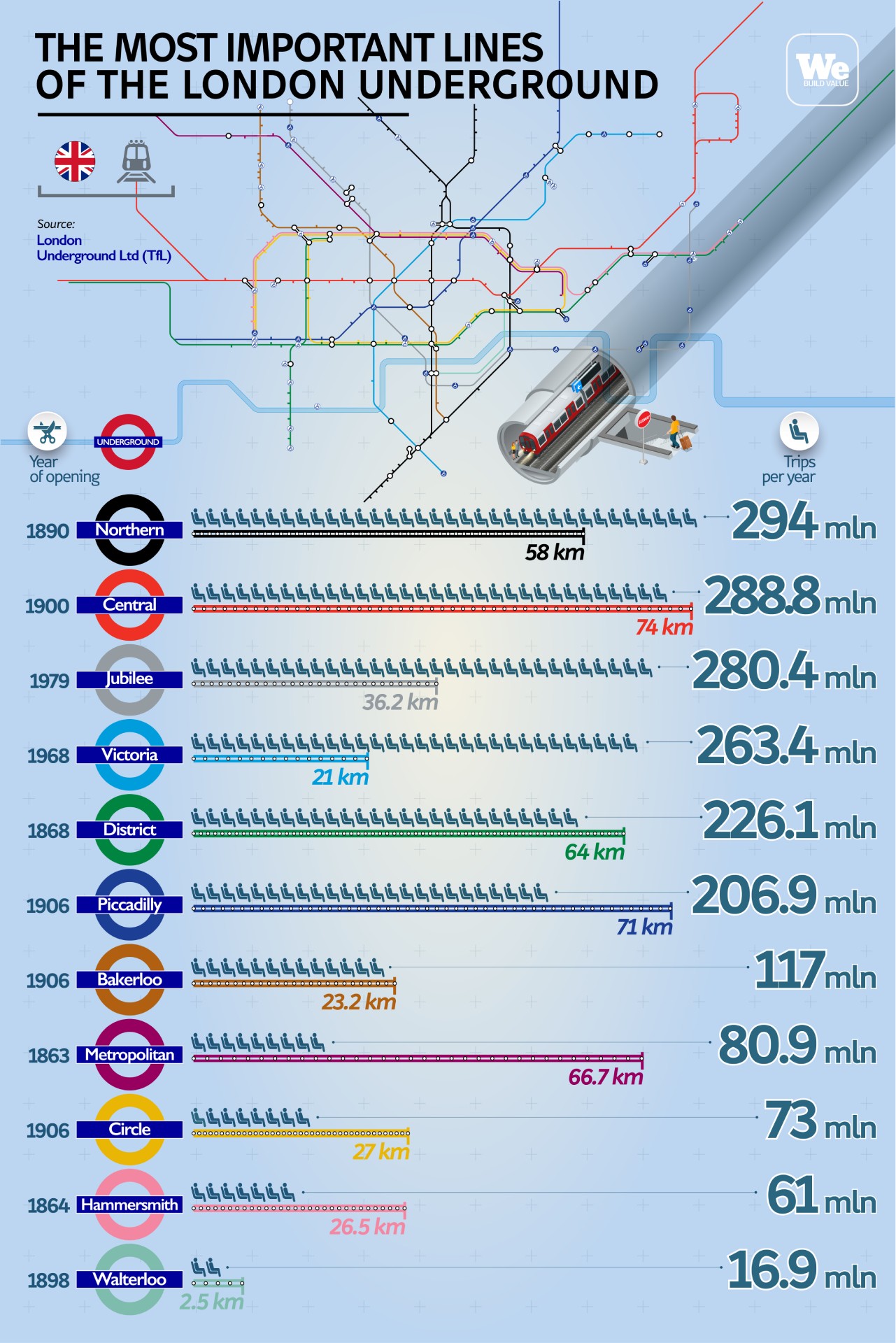In the beginning, over a century ago, it was called the “Baker Street and Waterloo Railway,” but today everyone knows it as the Bakerloo Line. The subway line, famous even outside of England for the brown color by which it is recognized on the maps of the London Tube, has served the city of London since 1906, the year of its inauguration after about a decade of construction. It is therefore a veteran of the London underground network, so much so that its trains are actually 51 years old and are among the oldest in operation in all of England.
Despite its age, however, the Bakerloo Line, which cuts through the capital from the Northeast to the South of the metropolis, is still one of the busiest lines, capable of carrying over 125 million passengers each year, serving them at 25 stations, many of which traverse the West End area.
And precisely because of its importance within London’s transportation system and the strategic value of its route, Transport for London (the company that manages city transportation) has approved an ambitious plan for the extension of the line, which, according to the latest estimates, will involve a total investment of £8 billion (€9.35 billion).
The Future of the Bakerloo Line
The tens of thousands of people who disembark at the Elephant & Castle terminus every day, the area of the metropolis located beyond the South bank of the Thames, are curious about how their lives will change when the Bakerloo trains continue their journey. The line extension project involves extending its route to Lewisham, with the construction of two new stations (Burgess Park and Old Kent Road) that will serve a vast portion of the territory, with significant impacts on urban development and economic well-being.
According to Transport for London calculations, the line extension will ensure 150,000 new subway trips each day compared to today. But the realization of the project will also have an impact on urban planning and employment. In fact, there will be 50,000 new homes built near the track and 85,000 jobs created in the area affected by the new infrastructure.
The project is ambitious and futuristic. The London administration estimates that the approval process and fund-raising could take at least another six years, to start the work in 2030 with an expected completion date for the opening of the work in 2040. At first glance, it seems like a long-term vision that explains the sense of large projects, designed not for today but for tomorrow.
Cities are reborn with subway lines
The extension of the Bakerloo Line is just the latest in a series of major projects affecting the London Underground, the oldest in the world and the largest in Europe. The Tube, as it is called, was first opened on January 10, 1863, covers over 400 kilometers of track, and has 272 stations spread throughout the metropolitan area of the English capital. It is a huge infrastructure that sees an average of 28 million individual passengers every year, but over 1 billion accesses.
 To achieve these results and serve the city in this way, the project has always been at the center of modernization projects that affect, one after the other, all of its lines. One of the most recent and impressive is that of the Northern Line, first opened in 1906 but refurbished and extended in 2021, now reaching a length of 58 kilometers with 52 stations. The vitality of the London Underground perfectly illustrates the value of this urban mobility model, in full development also in Italy. In Milan, the Webuild Group is completing Line M4, which will connect the city center to Linate Airport in 15 minutes, while in Rome, the construction of the Piazza Venezia station of Metro C is underway, which will be one of the most beautiful and grandiose archaeological stations in the world.
To achieve these results and serve the city in this way, the project has always been at the center of modernization projects that affect, one after the other, all of its lines. One of the most recent and impressive is that of the Northern Line, first opened in 1906 but refurbished and extended in 2021, now reaching a length of 58 kilometers with 52 stations. The vitality of the London Underground perfectly illustrates the value of this urban mobility model, in full development also in Italy. In Milan, the Webuild Group is completing Line M4, which will connect the city center to Linate Airport in 15 minutes, while in Rome, the construction of the Piazza Venezia station of Metro C is underway, which will be one of the most beautiful and grandiose archaeological stations in the world.
Behind it all is the desire to offer citizens and visitors an efficient, fast, and above all sustainable transportation service, capable of reducing surface traffic and making large metropolises more livable.

